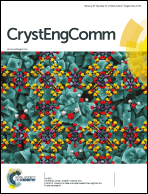On the mechanisms of hydrogen-induced blistering in RF-sputtered amorphous Ge
Abstract
Hydrogenated amorphous germanium, a-Ge:H, is a material of interest for optoelectronic applications such as solar cells and radiation detectors because of the material's potential to extend the wavelength sensitivity of hydrogenated amorphous silicon. For such applications, the best structural quality is required. Here, we investigate the mechanisms of blister formation in a-Ge:H films obtained by RF (radio frequency) sputtering when submitted to annealing. By a Fourier transform IR spectroscopy study of the Ge–H stretching vibrations, it is found that annealing increases the density of GeH2 dihydrides residing on the internal surfaces of nanovoids which increase their size because of that. The thermal energy supplied by annealing also favours the breakage of the Ge–H bonds with consequent release inside the cavities of atomic H which then reacts to produce molecular H2. The expansion of the H2 gas causes the nanovoids to enhance their volume up to the formation of surface blisters. The presence of H2 in the blisters is confirmed by the activation energy for the onset of blistering as measured by Arrhenius plots. The reduced H content observed by elastic recoil detection analysis and secondary neutral mass spectrometry in the annealed samples where blister bursting took place further supports the hypothesis of H2 filling the blisters before they explode.



 Please wait while we load your content...
Please wait while we load your content...